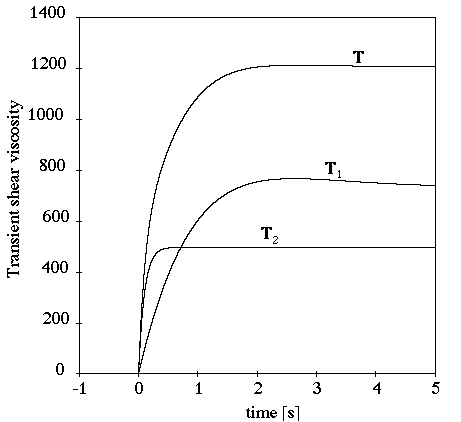If you define multiple relaxation modes for your differential viscoelastic fluid, you can specify the model, relaxation time, and other parameters for each mode. (It is recommended that you use the same model for each relaxation mode.) For multiple relaxation modes, the viscoelastic stress is written as follows:
(6–67) |
A purely viscous component can also be added.
Consider, for example, a fluid being modeled with two relaxation modes as follows:
mode 1: PTT model,
=0.1 s,
Pa-s,
=0.2,
mode 2: PTT model,
=1 s,
Pa-s,
=0.2,
Figure 6.57: Simple Shear Flow with Multiple Relaxation Times shows the
viscometric behavior for this fluid in a simple shear flow. Here, the cut-off is
controlled by the larger relaxation time, and the slopes of the curves (for shear
rates between 1/ and 1/
) are affected.
Figure 6.58: Extensional Flow with Multiple Relaxation Times shows the
viscometric behavior for this fluid in an extensional flow. The slopes of the curves
(for extension rates between 1/ and
) are affected.
Figure 6.59: Transient Shear Flow with Multiple Relaxation Times shows the viscometric behavior for this fluid in a transient shear flow. The multiple relaxation modes have an effect on the transient phase. In this case, the length of the transient phase depends upon the larger relaxation time. The multiple relaxation modes also affect the overshoot magnitude.





